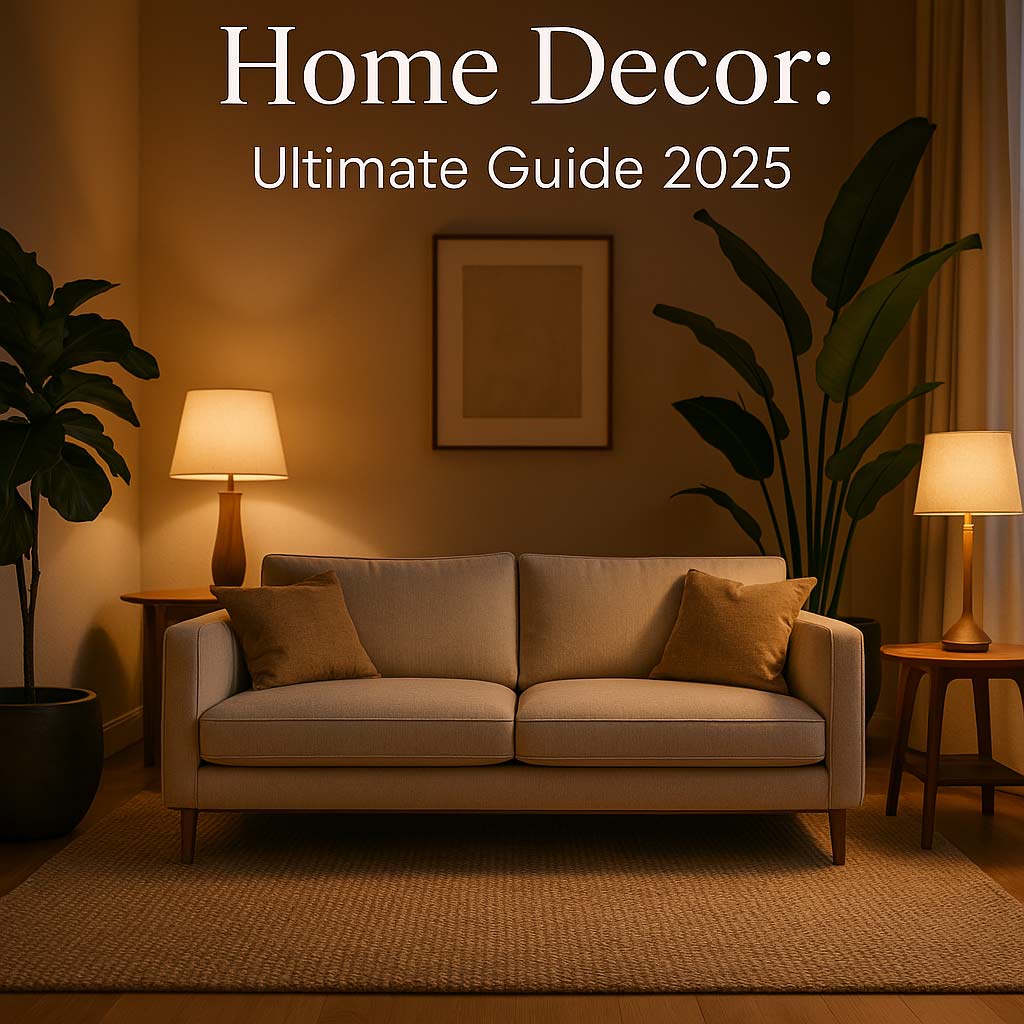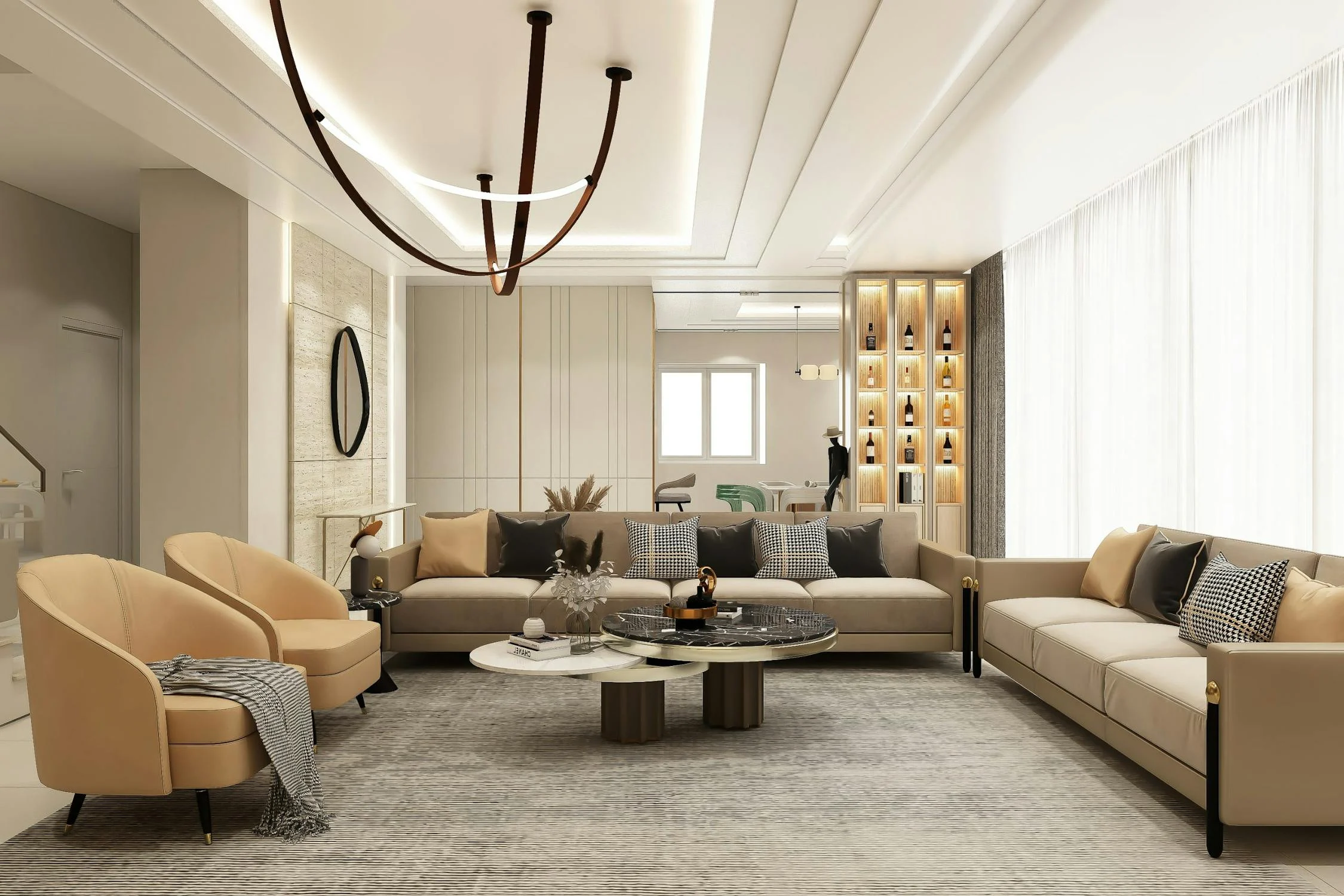Introduction
Your home is more than just a place to live—it’s a reflection of your personality, your lifestyle, and your taste. That’s why home decor is so important. When done right, it creates a space that’s both visually beautiful and deeply comfortable. In this guide, we’ll walk you through everything you need to know about home decor, from choosing color palettes and furniture styles to creating mood-enhancing lighting and adding personal touches. Whether you’re starting from scratch or refreshing an existing space, this comprehensive guide will give you the inspiration and tools to turn your house into a dream home.
1. Understanding Home Decor: What It Really Means
Home decor isn’t just about making a space look good—it’s about creating harmony between beauty, functionality, and comfort. It includes everything from:
-
Wall colors and wallpaper
-
Furniture style and placement
-
Lighting design
-
Decorative accessories
-
Art, rugs, curtains, and textiles
-
Storage solutions and space organization
Effective home decor brings balance, flow, and emotion to your environment. It’s what transforms a house into a home.

Home Decor: The Ultimate Guide to Designing a Stylish, Comfortable Home
2. Choosing the Right Color Palette
Color is one of the most powerful tools in home decor. It can change the mood of a room instantly.
Popular Color Palettes in 2025:
-
Warm Neutrals: Soft taupe, beige, and off-white are timeless and calming.
-
Earth Tones: Olive green, terracotta, clay, and sandy browns bring nature indoors.
-
Moody Hues: Deep navy, charcoal gray, and forest green add drama and luxury.
-
Soft Pastels: Lavender, blush, mint, and sky blue create a peaceful, romantic feel.
💡 Pro Tip: Use the 60-30-10 rule. Choose:
-
60% for the dominant color (walls)
-
30% for secondary (furniture)
-
10% for accents (decor, cushions, etc.)
3. Finding Your Decor Style
Before decorating, identify your personal interior design style. Some popular ones include:
-
Modern: Clean lines, minimalism, neutral tones, and functional pieces.
-
Bohemian: Eclectic, colorful, rich in patterns and textures, full of personality.
-
Scandinavian: White spaces, natural wood, simplicity, and coziness.
-
Industrial: Exposed brick, metal accents, dark colors, and raw materials.
-
Traditional: Warm colors, classic furniture, symmetrical layouts.
Once you know your style, every decor decision becomes easier and more cohesive.
4. Furniture: Layout, Function, and Comfort
Furniture is both functional and aesthetic. When choosing and arranging it, consider:
Key Furniture Tips:
-
Proportion Matters: Avoid oversized furniture in small rooms. Measure your space.
-
Flow and Movement: Arrange furniture to create clear pathways and natural flow.
-
Focal Point: Every room should have a visual anchor (TV wall, fireplace, art).
-
Multi-functional Pieces: Use ottomans with storage, foldable tables, or sleeper sofas.
Mix and match textures (like wood, leather, linen) for depth and warmth.
5. The Power of Lighting
Lighting is often underestimated, but it has the power to make or break your decor. There are 3 main types:
-
Ambient Lighting: The general lighting of the room (ceiling lights, chandeliers).
-
Task Lighting: Focused lights for specific tasks (desk lamps, under-cabinet lights).
-
Accent Lighting: Decorative lighting (LED strips, wall sconces, spotlights on art).
Use dimmers to control mood and layer multiple light sources to avoid harshness.
6. Wall Decor: From Blank to Beautiful
Walls are blank canvases that can completely transform your space. Consider these options:
-
Artwork: Paintings, prints, or framed photos bring color and personality.
-
Mirrors: Reflect light, add depth, and make small spaces appear larger.
-
Shelving: Functional and decorative—display books, plants, and objects.
-
Accent Walls: Use wallpaper, wood panels, or bold paint for a dramatic effect.
7. Add Personality with Decorative Accessories
Accessories are the jewelry of your home—small, stylish, and full of impact.
-
Throw Pillows & Blankets: Add texture, pattern, and seasonal variation.
-
Rugs: Anchor the space and add warmth.
-
Plants: Bring nature inside, improve air quality, and soften the look.
-
Candles & Diffusers: Add scent and ambiance.
-
Books & Sculptures: Make the space feel thoughtful and lived-in.
Avoid clutter—choose meaningful pieces that reflect your story.
8. Storage and Organization Solutions
A well-decorated home is also a well-organized home. Clutter can ruin even the most beautiful decor. Here’s how to keep things neat:
-
Hidden Storage: Use beds with storage drawers, baskets, and ottomans.
-
Wall-Mounted Shelves: Save floor space and display decor at the same time.
-
Built-In Cabinets: Custom solutions that blend seamlessly with your design.
-
Hooks & Hangers: For bags, coats, and keys—both practical and stylish.
9. Seasonal and Festive Decor
Updating your decor with the seasons keeps your home fresh and exciting.
-
Spring/Summer: Light fabrics, fresh flowers, beach-inspired elements.
-
Fall/Winter: Warm textures, cozy throws, moody colors, holiday touches.
-
Holidays: Subtle holiday decor can add magic without overwhelming the space.
Switching out accessories seasonally is a budget-friendly way to redecorate.
10. Home Decor Trends in 2025
Stay ahead of the curve by embracing these upcoming trends:
-
Sustainable Design: Eco-friendly materials like bamboo, recycled wood, and organic fabrics.
-
Maximalism: Bold colors, layered textures, and expressive personal items.
-
Smart Home Integration: Stylish tech like hidden speakers, LED lighting, and smart thermostats.
-
Wabi-Sabi: Celebrating imperfection with rustic, raw, and earthy elements.
-
Curved Furniture: Softer shapes in sofas, tables, and decor.
Conclusion
Great home decor isn’t about how expensive or trendy your items are—it’s about how well they express who you are and how they make you feel. By choosing the right colors, furniture, lighting, and accessories, and understanding your personal style, you can create a home that is beautiful, functional, and welcoming.
Whether you live in a cozy apartment or a spacious house, your home deserves to be your sanctuary. Take your time, trust your instincts, and enjoy the process of creating a space that reflects your story.
🧠 FAQ – Frequently Asked Questions About Home Design & Decor
1. What is the most popular home design style in the U.S. right now?
The most popular home design style in 2025 is a mix of Modern Farmhouse and Minimalist Scandinavian. Homeowners love the clean lines, natural textures, and cozy-yet-sleek vibes these styles bring.
2. How can I make my home look stylish on a tight budget?
Use smart tricks like repainting old furniture, adding secondhand decor, switching out throw pillows, and using mirrors to create depth. Thrift stores and online marketplaces are treasure troves!
3. Which colors are trending in 2025 for home interiors?
Earthy tones like sage green, terracotta, dusty rose, and deep navy are big this year. These colors create a grounded, calm, and sophisticated feel throughout the home.
4. How do I decorate a small space without making it feel cluttered?
Choose multi-functional furniture, use vertical storage, go for light and neutral colors, and avoid over-accessorizing. Less stuff, more space = more peace!
5. Is it better to follow trends or go with my personal taste?
Always lead with your personal taste! Trends come and go, but your home should reflect you. Blend trendy elements subtly if they align with your vibe.
6. How often should I update my home decor?
There’s no rule! But generally, refreshing your space seasonally or once a year keeps things exciting. Even small changes like swapping cushions or adding plants can refresh the energy.
7. What’s the difference between home design and home decor?
-
Design = the layout, architecture, and structure of a space.
-
Decor = the style, furniture, colors, and accessories used to personalize it.
8. Can I mix different design styles?
Yes, yes, a thousand times yes! Mixing styles—if done with intention—creates a unique, personalized aesthetic. Just keep a consistent color palette or one unifying theme to tie it all together.
9. What are some quick home decor upgrades I can do in a weekend?
-
Paint an accent wall
-
Rearrange furniture
-
Add new lighting fixtures
-
Hang new wall art or mirrors
-
Add fresh indoor plants
10. Where can I find inspiration for home design?
Pinterest, Instagram, YouTube, design magazines, and—you guessed it—our blog! Bookmark us and stay inspired. 😉



Hanibi